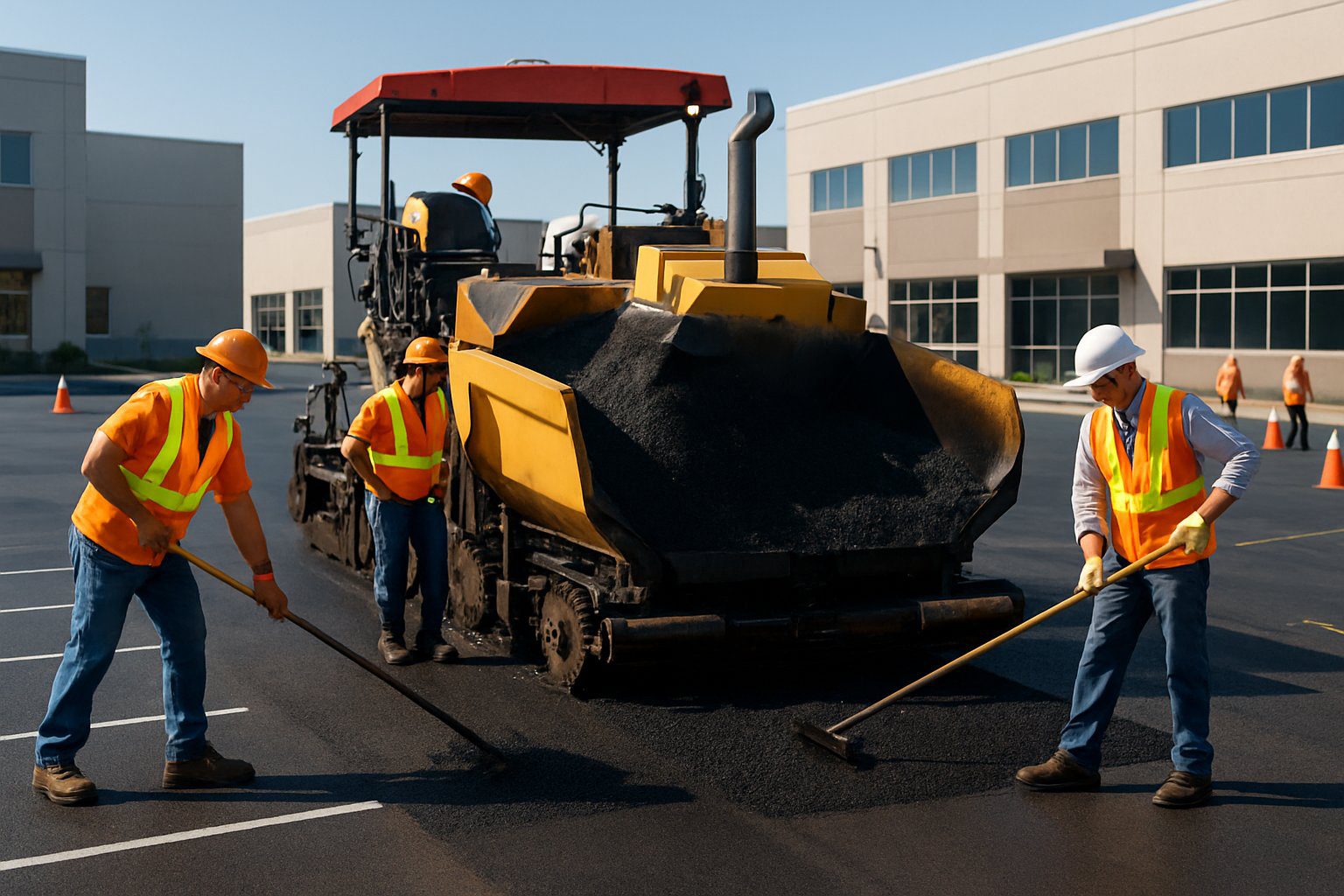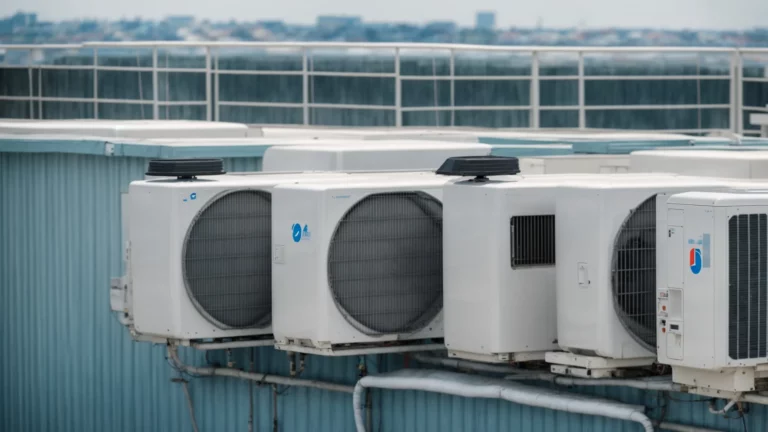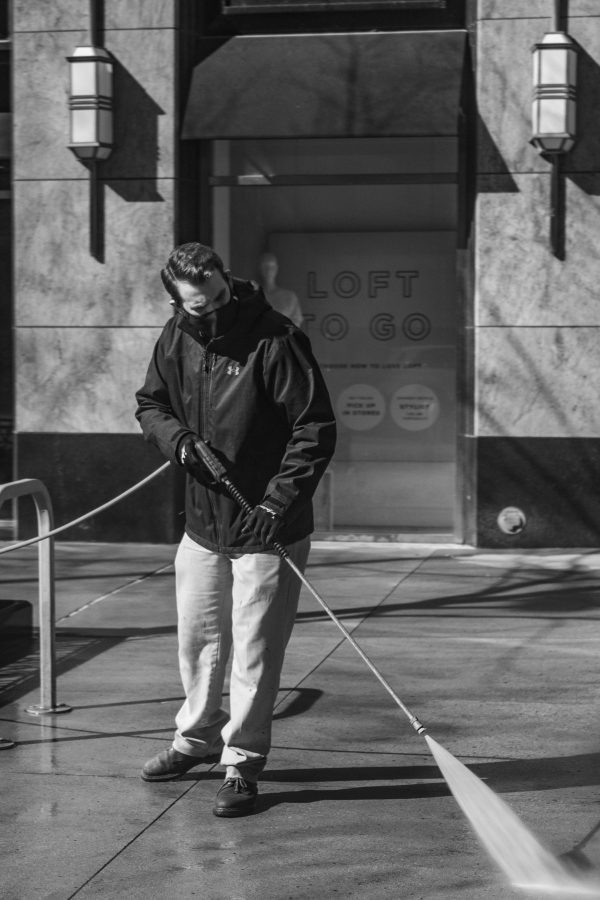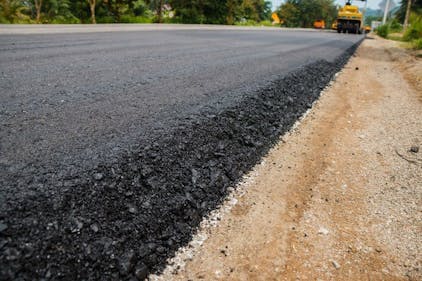Asphalt Services for Businesses in Hamilton
Complete Commercial Parking Lot Solutions in the Hammer
Asphalt services for businesses play a big role in keeping high-traffic areas like parking lots and access roads safe, smooth, and looking sharp. Over 90% of parking areas use asphalt because it’s durable and cost-effective for commercial needs.
Well-maintained asphalt makes a strong first impression and keeps daily operations rolling without annoying cracks or potholes tripping things up.
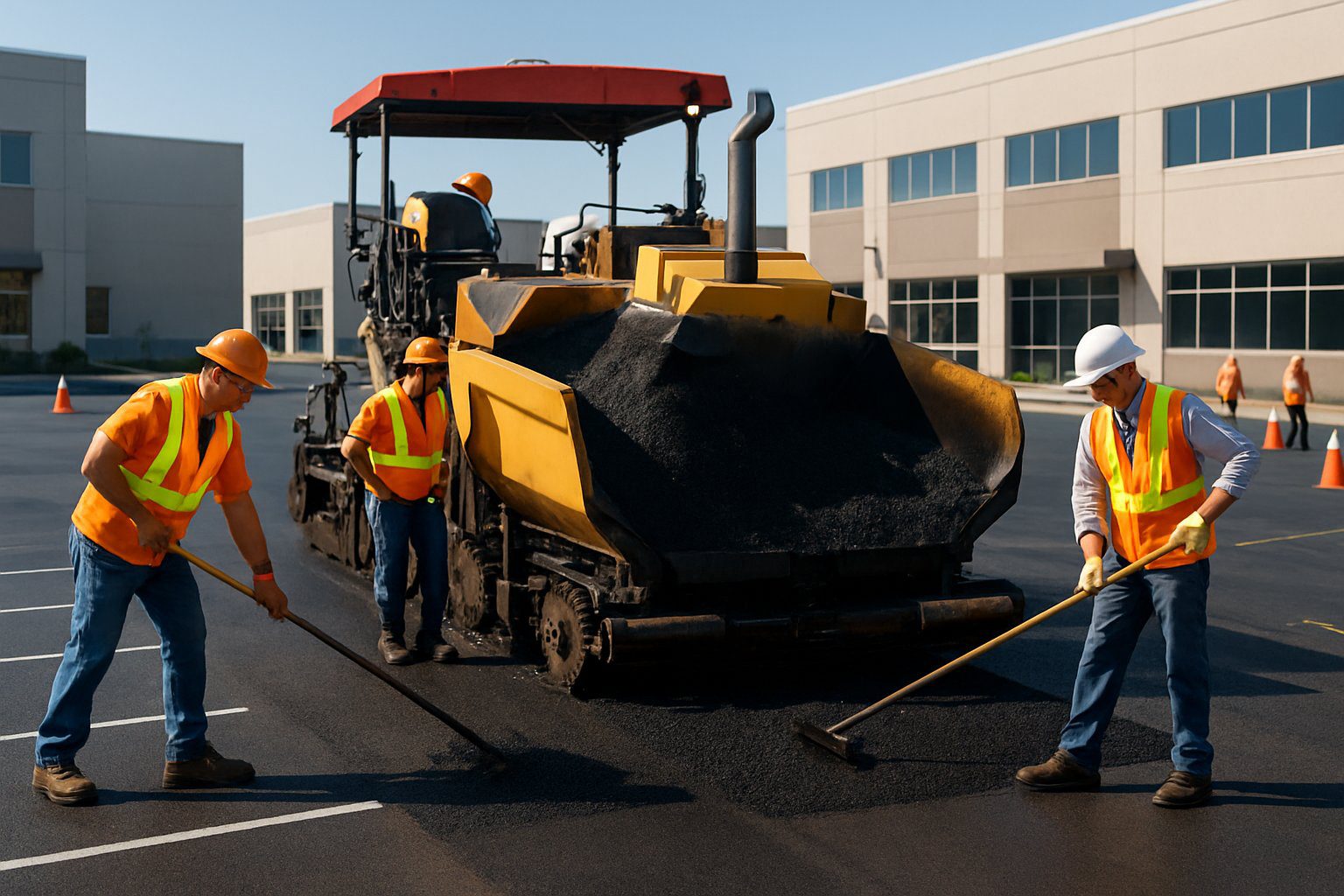
Choosing the right asphalt contractor in Hamilton to take care of your parking lot and asphalt repairs lets you fix issues fast, add features like curbs or speed bumps, and keep your property friendly for both drivers and pedestrians. These services cover repair, resurfacing, seal coating, and upgrades for accessibility.
When your business depends on reliable pavement, taking care of your asphalt surfaces protects your investment and keeps the property’s value up. If you’re curious about what’s out there, here’s a list of asphalt services for businesses.
Core Asphalt Services for Businesses

Asphalt’s popularity in commercial properties comes down to durability, versatility, and cost. Your business needs surfaces like parking lots and driveways to handle heavy use and keep things moving for customers and staff.
Asphalt Installation and Paving
Solid asphalt installation lays the foundation for your business property. New asphalt paving suits office buildings, retail centers, and just about any commercial site.
Crews use specialized machinery to lay and compact each asphalt layer, which helps stop future cracks or other headaches. The process starts with grading for drainage, then adds a base layer, and finally the hot asphalt mix on top.
Well-installed asphalt can last for years and gives your business a crisp, professional look. Over 90% of U.S. parking lots use asphalt—no surprise, given its performance and easy repairs, according to the National Asphalt Pavement Association.
Commercial Driveways and Parking Lots
Commercial driveways and parking lots take a beating from cars, delivery trucks, and emergency vehicles. Good design considers vehicle weight, turning areas, and entry points.
Proper grading stops water from pooling and causing trouble. Paving often includes curbs and striping to direct traffic and boost safety.
Clear markings help everyone get around without confusion. When cracks or fading pop up, resurfacing brings back function and appearance.
Routine resurfacing keeps your property looking sharp and extends its lifespan—something every business owner wants.
Asphalt Surface Maintenance
Regular maintenance keeps your driveway or lot in shape. Crack sealing, pothole repair, and seal coating stop small problems from turning into costly repairs.
Seal coating adds a protective layer against water, chemicals, and oil leaks. Keeping markings visible and features like speed bumps or ADA ramps in good shape supports safety and accessibility.
Heavy-use areas might need extra support, like fabric underlays or thicker overlays. Staying on top of maintenance keeps your property looking good and protects your investment. For more on specific repairs, check out this commercial asphalt services resource.
Rubber Paving
Some operations enjoy the usage of rubber paving. If that’s your bouncy type, please check out this other article on rubber paving.
Asphalt Repair and Restoration
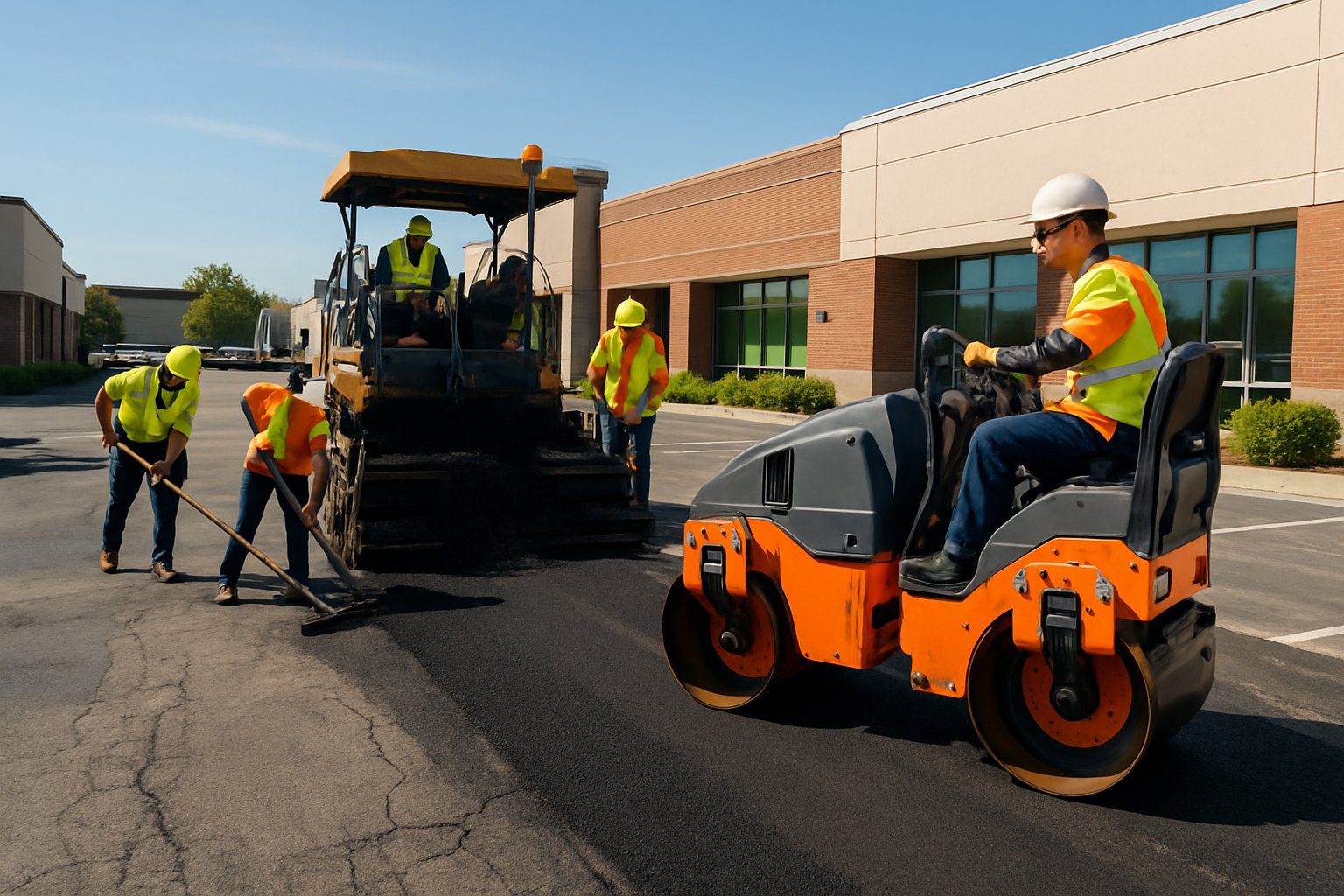
Staying on top of repairs keeps small defects from turning into major headaches. Quick fixes boost safety and help your pavement last longer.
Crack Filling and Sealing
Cracks show up on asphalt from weather, moisture, heavy loads, and just plain wear. Water sneaks in through these cracks, weakening the base and leading to potholes or worse.
Filling and sealing cracks with a flexible sealant blocks water and dirt. This step works best when you catch cracks early, before they spread.
Good crack treatment adds years to your asphalt and saves money compared to ripping out big sections. Regular inspection and sealing keep things in check. Here’s more on how crack and joint sealing keeps pavement in shape.
Pothole Repair
Potholes form when cracks go ignored and water wrecks the pavement base. Freeze-thaw cycles and traffic just make things worse, leaving rough patches and missing chunks.
To fix potholes, crews clean out the damaged area and fill it with new asphalt. That patch restores the surface and makes it safe again.
Quick repairs cut down on accidents and vehicle damage. The quality of materials and workmanship really matters here, so regular maintenance pays off. Learn more about hot asphalt pothole filling and focused repair services.
Resurfacing and Overlay
When wear gets widespread, resurfacing or overlay can help. This means putting a fresh asphalt layer over the old surface, covering cracks and small holes.
Resurfacing costs less and goes faster than a full replacement. It’s a good pick when the base is solid but the top layer’s rough.
The new overlay bonds with the old asphalt, giving you a smooth finish that can last another 8–15 years. For more on full-depth resurfacing and overlays, check out services focused on pavement renewal.
Specialized Solutions for High-Traffic Areas
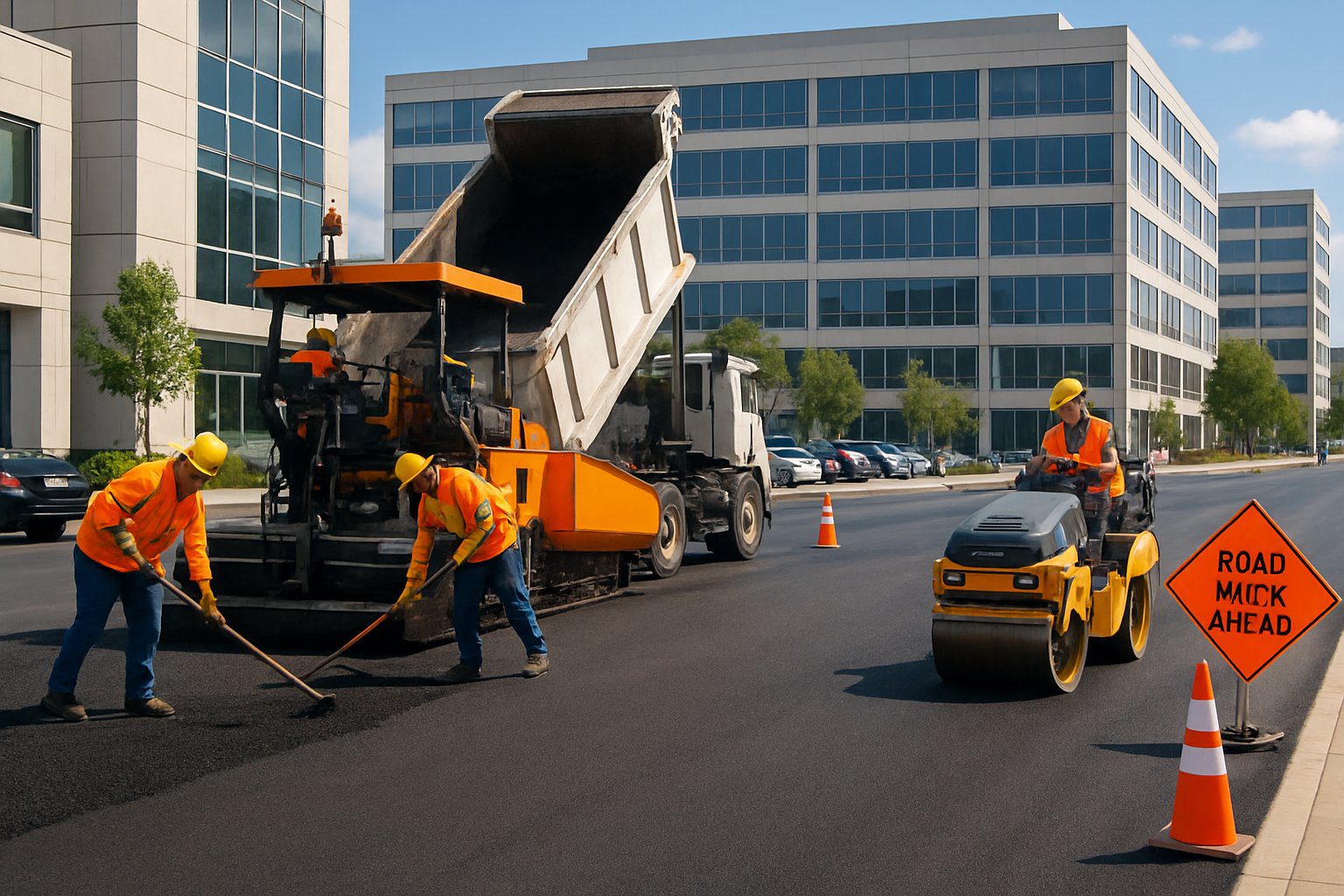
Busy commercial spots put a lot of pressure on asphalt. Pavements here need strength, safety, and real staying power.
Heavy-Use Parking Lots
Parking lots packed with cars, staff, and delivery trucks wear out fast if not built for heavy loads. Thicker asphalt and reinforced bases make a difference, especially at entrances and exits.
Routine maintenance—like crack filling and sealcoating—helps lots last longer. Clear lines and signs keep traffic moving and cut down on confusion.
When resurfacing or installing, think about drainage too, to avoid potholes and water damage. Good grading keeps water off the pavement.
Asphalt’s strength, cost-savings, and repairability make it the go-to for most businesses. Here’s more on the benefits of asphalt for high-traffic commercial areas.
Warehouse and Industrial Facilities
Warehouses and industrial sites need asphalt that stands up to trucks, forklifts, and heavy machinery. These zones see more stress than your average parking lot, so they need thicker aggregates and stronger sublayers.
Surface smoothness matters—a lot. Bumpy pavement can damage equipment, slow down work, or even cause accidents.
Wheel stops and bollards help protect buildings and guide vehicles. Specialized coatings and frequent inspections can also help cut down on damage and keep things running smoothly.
Loading Zones Safety Features
Loading zones need extra durability and safety. Frequent wheel turns, stops, and quick moves wear down regular pavement fast.
Reinforced asphalt mixes help prevent rutting and cracking here. To keep accidents down, use slip-resistant coatings, high-visibility markings, and reflective paint for walkways and hazards.
Ramps, curbs, and raised markers guide trucks and protect pedestrians. Schedule routine checks since these safety features fade or wear out over time.
Well-maintained loading zone asphalt lowers liability and keeps your property safer. You can read more about asphalt company services for business traffic safety.
Preventive Maintenance and Longevity
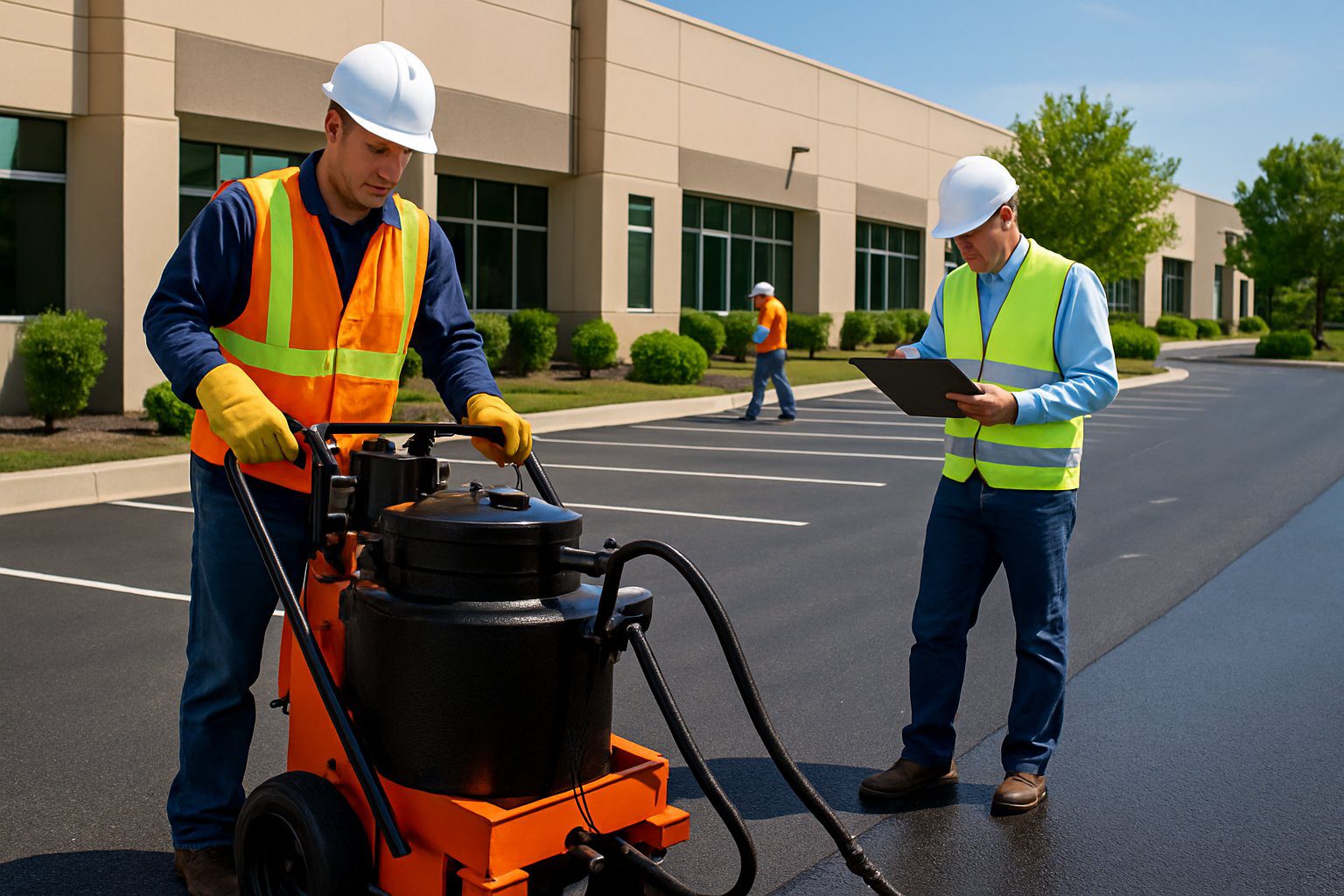
Taking care of your asphalt keeps it safe, appealing, and tough against traffic and weather. Catching problems early and sticking to a maintenance schedule cuts repair costs and helps you avoid big replacements.
Routine Inspections and Upkeep
Give your asphalt a good look at least twice a year. Watch for small cracks, potholes, standing water, and spots where oil or chemicals have spilled.
Finding these early keeps costs down. Sweep away debris, clean oil spots, and clear drains so water doesn’t pool or seep in.
A maintenance checklist helps keep you on track. Check for edge erosion, drainage at catch basins, and faded or missing striping.
It’s smart to do formal walk-throughs after winter or heavy rain. Best practice guides like this one on extending commercial asphalt life can help you stay organized.
Protective Sealcoating
Sealcoating protects asphalt from sunlight, water, chemicals, and vehicle fluids. Fresh sealcoating slows down oxidation, which can make asphalt brittle and prone to breakdowns.
It also gives your lot a crisp, black finish and helps resist oil and gas spills. Most lots do well with sealcoating every three to five years, depending on traffic and weather.
Too much sealcoating isn’t good either, so stick to a schedule that matches your property’s needs. Regular sealcoating stretches out your pavement’s life and makes upkeep easier. If you want to dive deeper, check out articles on asphalt pavement maintenance best practices.
Seasonal Maintenance Plans
Planning around the seasons helps protect your asphalt from weather-related problems. After winter, check for new cracks or potholes that might’ve popped up from freeze-thaw cycles.
Early spring is a good time to clean, patch, and get your surface ready for the rest of the year. During fall, clear leaves and debris to keep water from pooling.
Before summer, inspect and repair markings and signage so the sun doesn’t fade them. Set up a calendar with reminders for inspections, cleaning, and preventive fixes a few times each year.
Scheduling regular crack sealing and quick patch repairs as part of your plan really helps the surface last. If you want a step-by-step approach, check out this preventive maintenance guide.
Enhancing Safety and Appearance
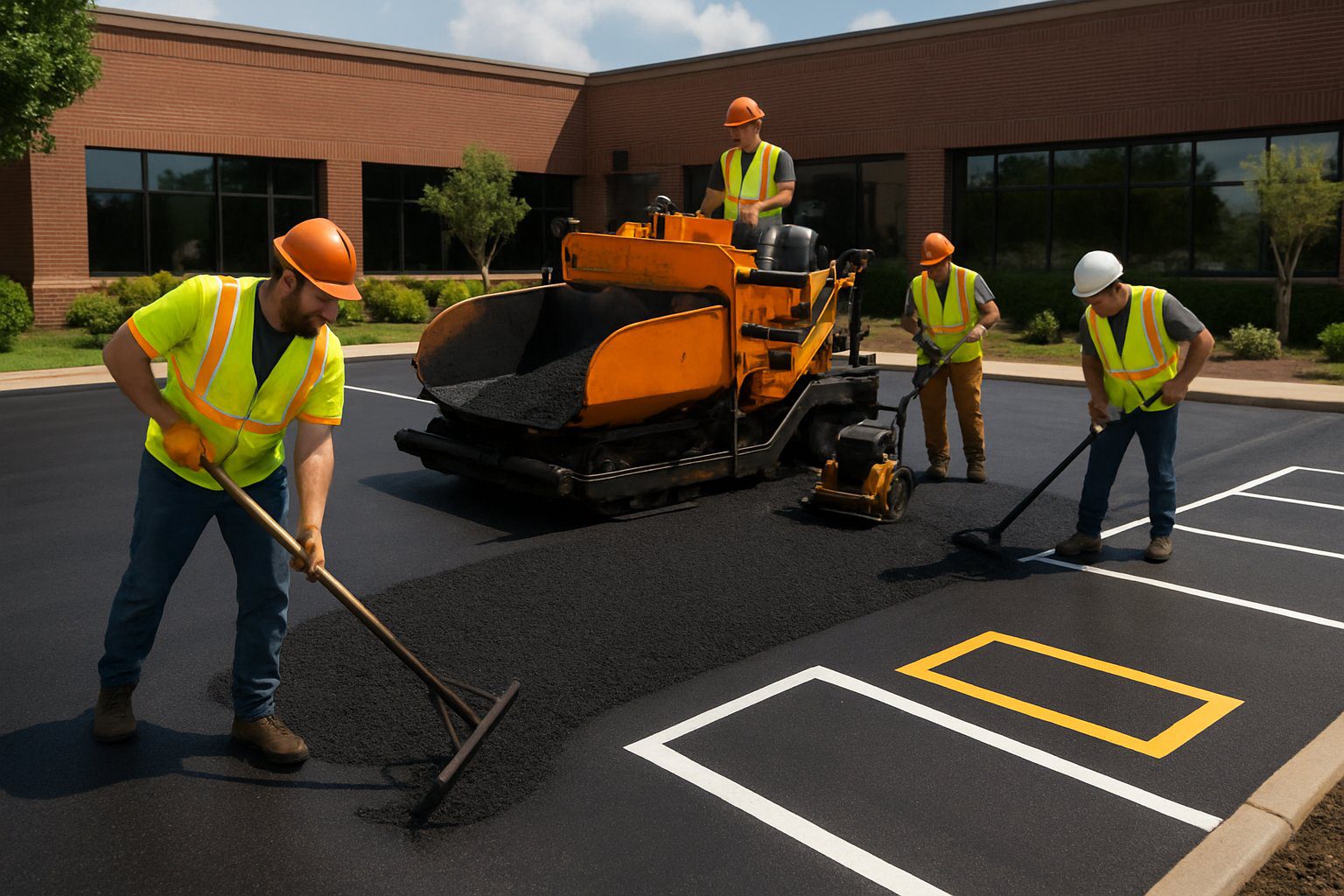
Keeping your business’s asphalt in good shape matters for both safety and curb appeal. Clear markings, proper access, and a clean look make visitors feel welcome.
Line Striping and Markings
Line striping guides vehicles and pedestrians in lots and on walkways. Fresh, visible lines lower the risk of collisions and make it easier for everyone to find their way.
Well-designed markings make crosswalks, stop bars, and lanes easy to spot. Marked parking spots, fire lanes, and loading zones help keep things efficient and accessible for emergencies.
Repainting faded lines keeps traffic orderly and reduces the chance of injuries or accidents. Good striping also helps you meet legal standards and boosts your property’s appearance, as mentioned in this asphalt paving safety article.
Accessibility Compliance
Maintained asphalt surfaces are key for accessibility. You need designated handicap parking, accessible routes, and ramps that follow ADA rules.
Accurate signage and curb cuts make it easier for people using mobility devices to get in and out safely. Clearly marked accessible paths help reduce liability and support compliance with the law.
Routine inspections and updates help make sure everything meets current guidelines. Non-compliance can lead to fines or legal headaches, so it’s smart to address these needs quickly. Experts say accessibility compliance also makes your business look more welcoming.
Aesthetic Improvements
The look of your parking lot or asphalt surfaces shapes how customers see your business. Fixing cracks, potholes, and faded areas creates a smoother, more inviting space.
Fresh sealcoat and new lines make the property look clean and cared for, which can help bring in and keep customers. A tidy lot shows attention to detail and suggests a safer environment.
Visible cracks or rough spots should be fixed quickly to prevent more damage. Improving your lot’s appearance isn’t just about first impressions—it can help the pavement last longer and shows you care about visitors and employees. Regular repairs add value and make your property more inviting, as highlighted by the benefits of commercial asphalt repair.
Frequently Asked Questions

When you’re hiring asphalt contractors, check out their experience, what technology they use, and whether they follow industry standards. Picking the right materials and methods for your area and business makes a big difference in long-term value.
What are the key factors to consider when choosing an asphalt service provider for my business?
Ask for proof of credibility, like customer reviews and a solid track record. Years in business and experience with similar projects matter too.
Look at their portfolio to judge the quality of their work. Availability, clear communication, and warranty options should also be on your list. For more tips, you can visit the asphalt industry’s Frequently Asked Questions page.
How does climate and regional weather impact asphalt paving quality and longevity?
Cold weather can crack asphalt through freeze-thaw cycles. Hot weather might soften it, causing ruts or dips from heavy vehicles.
Areas with lots of rain need good drainage to avoid water damage. Using local, weather-resistant materials helps your paved surfaces last longer and stay safer.
What are the latest technologies and techniques in asphalt paving for commercial properties?
Newer mixes like polymer-modified asphalt boost durability. Machine-controlled paving creates smoother, more consistent surfaces.
Infrared repair tech makes pothole fixes faster by heating and blending old and new asphalt. Laser-guided grading gives you better drainage.
Can you outline the maintenance requirements for commercially paved asphalt surfaces?
Routine maintenance means sealcoating every 2-3 years to guard against oxidation and moisture. Fill cracks quickly to keep water out from under the surface.
Regular cleaning, clearing debris, and repainting markings also help your asphalt look good and last. A deep clean once or twice a year can prevent early wear.
What are the compliance and safety standards for asphalt paving in a commercial setting?
You’ve got to follow local building codes, which government agencies control. ADA rules require accessible ramps and parking.
Safety covers good traffic control during work and putting in clear pavement markings. Regular checks for surface hazards help prevent accidents and keep you covered for insurance.
How does the cost of asphalt services vary for different business sizes and project scopes?
Large parking lots or roadways usually cost less per square foot than small driveways because of bulk pricing. Still, the total bill climbs higher with bigger spaces.
Excavation, materials, drainage needs, permits, and surface markings all play a role in the final price. If you want a complex design or a heavy-duty surface, expect to pay more.
For more on commercial paving services, check out this asphalt paving FAQ.

